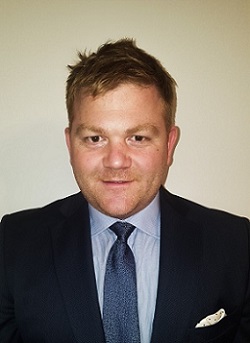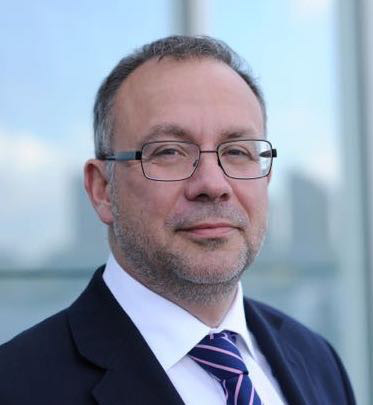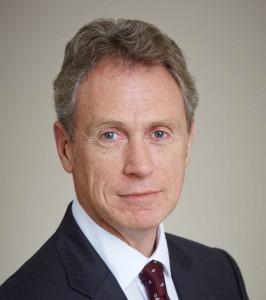Predictions for 2017

Abacus Group
Tom Cole, Director – EMEA, Abacus Group
Hedge funds were glad to see 2016 come to a close. While the year ended on an up-note, overall 2016 saw the greatest amount of asset out-flows and fund closures since 2009. As new capital returns, investors are looking for improvements with respect to operational capabilities and investment management processes.
One of the biggest priorities in 2017 will be cybersecurity. As we deal with the daily onslaught of news regarding election hacking in the recent United States election, we only expect the importance around cybersecurity protection to increase. Investment in security tools, services and personnel will continue at hedge funds and service providers. Fund managers will be pressed by investors to prove they are adhering to industry best practices with respect to cybersecurity.
Compliance requirements will also continue to increase. You will see more services and products come to market with the goal of helping fund managers comply with these new requirements. Hedge fund operating executives will see more emphasis on providing real-time transparency into their operations, versus historically only having to attest they are in compliance.
Predictive analytics/machine learning is still in its infancy at hedge funds, but will become more important starting this year. Several of the largest hedge funds are allocating more capital for hiring data scientists and investing in compute resources to better predict market movements and automate trading and sometimes decision making. The machines are coming. However, they will come slowly. 2017 will serve as the starting point for this new influence.
DataArt
Cliff Moyce, Global Head, Finance Practice, DataArt

Financial Services and Capital Markets
• Cyber security and data protection will become major board-level concerns as financial institutions realize that failing to protect customer information will be their biggest source of regulatory non-compliance and reputational risk. Organizations will invest heavily in correcting technology vulnerabilities, lax cultures and poor processes. As a result, data management in all its forms will dominate 2017.
• Rapid digitalization of customer-facing services will be a matter of organizational life and death as e-commerce and fintech elevate expectations for the optimal user experience (UX). E-commerce and fintech will increasingly provide attractive alternatives to traditional financial services organizations.
• Artificial Intelligence (AI) and automated business process management (BPM), including machine learning (ML) supported systems, will provide a competitive advantage as well as productivity improvements.
• Cloud Computing will continue to evolve into a mission-critical element in the operational infrastructures of financial institutions, becoming the best route to resolving legacy system headaches and reducing operational risk to the lowest possible levels. Without a cloud strategy, organizations will not be able to compete in the marketplace.
eWise
David Hamilton CEO of eWise

In the UK, the Access-2-Accounts provision within PSD2 along with parallel initiatives including OpenBank and recently published remedies from the CMA will introduce a new wave of technology and competitive openness. This new world of“openness” will likely present opportunity and challenge to both sides of the value-chain; banks and third-party processors.
PSD2, OpenBank and the CMA remedies introduce “front doors” to data to which banks will need to provide third parties with keys. These freshly mandated “open APIs” will be a milestone in banking technology and regulation, creating tremendous industry buzz.
However, considering the scope of each initiative and their projected implementation timetables along with their specification principles, it is apparent that PSD2, OpenBank and the CMA remedies offer access to the same thing; namely the end-users basic current account, albeit with different technical standards and implementations. Essentially three different “front doors”. Worse still, these doors lead into the same room. While all three initiatives address the scope of the basic current account, each initiative varies in its inclusion of credit card, overdrafts and savings accounts. Furthermore, only the CMA remedies address loan products, and these are in the context of business accounts only.
With the average consumer and small business customer possessing a broad range of financial services products including current accounts, credit cards, personal loans, leases, insurance, ISAs and various other investment and credit accounts, the scope of these “open API” initiatives might leave some of us feeling underwhelmed when it comes to providing end-users with innovative, convenient and value-added services driven by a truly comprehensive picture of their financial relationships. One might even ask how, without a platform able to aggregate data from a comprehensive range of target institutions and a broad list of product types, a third-party processor could build a sustainable business model given how limited and crowded the front room will be.
PSD2, Open Banking and the CMA remedies simultaneously introduce complexity and a narrow scope. Weenter 2017 withmorequestionsthananswers.
Lombard Risk
Mike Payne, Chief Technology Officer at Lombard Risk

Technology is transforming financial services and that will remain a key trend in 2017. While headlines are often captured by robotics, artificial intelligence and the Fourth Industrial Revolution, much of today’s innovation is happening in the back office.
Tighter and more complex regulatory and compliance requirements means compliance is at the centre of many financial technology strategies.
BASEL IV means firms need to continually track and report regulatory compliance. The more enlightened are seeing regulatory reporting processes as a by-product of wider data discovery and reporting. By using technology to efficiently monitor and analyse data they’re getting real insight into business and customer demands.
Agile financial technology specialists are able to adopt the latest technologies and build specialist applications. Successful institutions will be those that develop a culture that allows them to partner and leverage this pool of innovation and specialism and seamlessly integrate them into their technology and business architectures.
Embracing technology requires firms to embrace new ways of working and commit to continuous staff training. No institution can hope to have the knowledge and agility to do this in isolation. Working with specialists holds the key to creating technology solutions that deliver value for firms, clients and shareholders.
One Market Data
Louis Lovas, Director of solutions, One Market Data

In 2016 we saw an increased use of cloud computing by firms, on private and public cloud alike. Infrastructure and platforms matured drawing more users to outsource the next level of their services. Cloud deployments provide advantages in managing the scale through higher levels of data protection and fault tolerance at a cost saving. Focusing on solutions and leveraging the data dump is the fuel that drives the engine across the entire trade life cycle – beginning with alpha discovery, to trading algorithm design, then development and back-testing.
As competition and thinning margins increase, trading firms will continue in 2017 to search for talent and technology to achieve alpha. We can expect to see machine learning continuing to surge in quant finance, with many of its capabilities not yet explored, especially within cloud infrastructures. It will be interesting to see how and if elastic analytics for machine learning can be used for algo trading, marketsurveillance as a predictive tool and how the role of humans on the trading floor will be impacted.
OTAS
Tom Doris, CEO, OTAS

While intelligent trading solutions powered by artificial intelligence and machine learning have been around for some time, this trend remained a high priority for many firms and will continue to be a huge trend in 2017. For a while the term “artificial intelligence” was more of a buzz-word, but 2016 began to see a move away from the trendiness and towards application. The focus was on what these technologies can actually do, when these technologies are most needed and give users the most value add, and the role the technologies will play on the trading desk and more broadly throughout the firm. Traders are overwhelmed with a sea of market data and this has been a challenge on the trading desk for years. Today, we have enhanced decision support and automated analytical tools to help the trader parse through the data and find what is most valuable, or are afforded virtual assistance to have attention diverted to where it is most needed. Natural language processing and generation is also huge. For the first time, technology can give traders a report written in plain-English, making information easily digestible and actionable. As with any new technology, the main challenge after the hype has died down and implementation has started becomes about getting the technologies leveraged in the right places and working out any kinks. Specifically in 2017, a challenge will be that the focus will shift from technology on the trading desk to impending regulations. As the industry shifts to a more collaborative, open-source ecosystem model, firms will work together to address these issues and where it is appropriate to engage technology as a solution.
Sapient Global Markets
Mahima Gupta, Senior Manager with the Solutions team at Sapient Global Markets

With less than a year to go before MiFID II comes into force,the introduction of new reportable products and a number of other developments are increasing the complexity and breadth of trade and transaction reporting.
A well-established challenge for regulatory compliance projects is the lack of time to look for strategic solutions that unite the front and back office to set up the appropriate compliance and data governance structures. The other side of the challenge is the lack of internal expertise or up front analysis budget. This creates an environment of constant flux where manpower is pulled in different directions in order to maintain tactical and siloed systems that struggle to keep pace with the depth and breadth MiFID II requires.
As regulators seek more pre- and post-trade transparency, use more data identifiers and look for efficient reconciliation, the need for a comprehensive rethink of how firms are managing data, operational systems, external providers and costs is clear.
MiFID II offers an opportunity for firms to rethink reporting infrastructures to create a more efficient, cost-effective and sustainable approach to regulatory reporting across multiple regimes.
The ability to observe and learn from what did and didn’t work under previous regimes, particularly for the operating model and control framework that has facilitated reporting, will improve compliance and data governance processes. It will also support a more strategic approach that offers the capacity to adjust existing, and expand to new, regulations and will yield savings in both on going operational team overhead and technology footprint.
The Smart Cube

Between the Brexit referendum and the US presidential election outcome, 2016 was a year marked by surprises. The financial markets reacted to both events and even those who correctly predicted their outcomes were not guaranteedsuccess in the financial markets, due to volatile asset prices and extremes in investor sentiment. Investorsmust use market insights gained from the events of 2016to prepare for the upcoming year.
2016 taught us that geopolitical risk is real, and cannot be underestimated. The impacts of Brexit and the US presidential election on markets and currencies have shown that it is imperative that geopolitical risks be taken into account when considering investments. While the impact of such global events is always difficult to predict and avoid, broad diversification across asset classes can certainly help.
It has been demonstrated that long-term investment plans and patience with market volatility are necessary. In the first half of 2016, the collapse of the Chinese economy and a banking crisis in Europe seemed to be almost inevitable. However, fund managers who stuck with their stock picks through sharp volatility periods such as this were thosewho ended up beating the market in 2016.
Smart beta, which offers minimum volatility and variance, is on the rise in the ETF space. As we’ve seen, the impact of geopolitical events like Brexit are felt with spikes in market volatility, which makes smart beta strategies – active (requiring periodic rebalancing) strategies with passive (rule-based and transparent)characteristics – all the more appealing to investors.
Smartkarma

With MiFID II operational by 2018, change must happen in the investment research industry. It picked up speed in 2016, but will move a lot faster in 2017. The unbundling of research from execution presents many issues that the industry must address, in particular how to value research and how to make sure the right research is available at any given time. Even today, many buy side firms are still not sure where the budget for research spend will sit.
This regulatory push is set alongside a demand-driven pull from the users of research. As users struggle to cope with an overload of information from multiple sources producing the same waterfront coverage, investors similarly struggle to find the best research to support alpha generation.
Looking into 2017, there are numerous, innovative models being trialled in the industry to value research appropriately. For example, SocieteGenerale will now provide Asian research via an online, curated platform from fintech start-up Smartkarma. Other market options include a la carte purchasing solutions, auctioning of analysts’ time or subscription plans, to highlight a few.
The potential for improved productivity in the current market environment means there is also a commercial imperative to change the dated PDF document/email distribution approach. Similar to the Spotify’s music model, which now shows a far greater breadth of music consumption due to the ease of discovering new songs, having easy-to-discover research that fits the users’ needs will increase the use of the platform, and provide greater benefit to the user as well.









